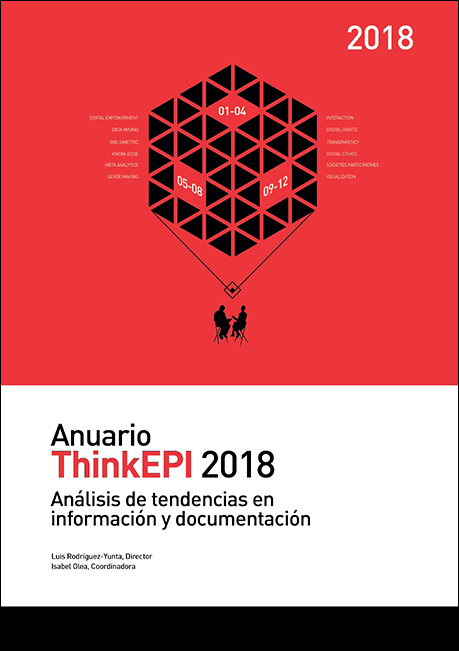What is open science?
DOI:
https://doi.org/10.3145/thinkepi.2018.43Keywords:
Open science, European Commission, Scientific revolution, Paradigm shift, Research.Abstract
The concept of open science is analyzed using the model of scientific revolutions coined by Thomas Kuhn. In this way, open science is a paradigm shift in research and, therefore, involves substantial procedural modifications. It is a model promoted by the European Commission who gathered public opinion in Europe about it. The reasons for making this change are not only social (the wealth of society is based on innovation), but also scientific. In this new paradigm, science must be open, collaborative, and made with and for society. In order to explain the elements of open science, several metaphors are used in this article and always include open access, open data, open peer review, and open software. In some cases, open educational resources, citizen science, and open notebooks "”although without unanimity"” are also included. Finally, we consider future changes within scientific research, especially as they relate to library services.
References
Dong, Yuxiao; Ma, Hao; Shen, Zhihong; Wang, Kuansan (2017). A century of science: Globalization of scientific collaborations, citations, and innovations. https://arxiv.org/abs/1704.05150
European Commission (2013). Digital science in Horizon 2020. March. https://ec.europa.eu/digital-single-market/en/news/digital-science-horizon-2020
European Commission (2014). Public consultation: "˜Science 2.0´: Science in transition (background document). Directorates-General for Research and Innovation (RTD) and Communications Networks, Content and Technology (CONNECT). https://ec.europa.eu/research/consultations/science-2.0/background.pdf
European Comission (2016). Open innovation, open science, open to the world: A vision for Europe. Brussels: European Commission. Directorate-General for Research and Innovation. https://publications.europa.eu/s/fzsT
European Comission (2017a). Horizon 2020: Work programme 2016-2017. 16. Science with and for society. European Commission Decision C(2017) 2468 of 24 April 2017. http://ec.europa.eu/research/participants/data/ref/h2020/wp/2016_2017/main/h2020-wp1617-swfs_en.pdf
European Comission (2017b). Open science monitor. https://ec.europa.eu/research/openscience/index.cfm?pg=home§ion=monitor
Foster (2018). The future of science is open. https://www.fosteropenscience.eu/
Kuhn, Thomas S. (1962). The structure of scientific revolutions. Chicago: University of Chicago Press. ISBN: 0 226 45804 0 https://goo.gl/MUi1i3
Masuzzo, Paola; Martens, Lennart (2017). "Do you speak open science? Resources and tips to learn the language". PeerJ Preprints. https://doi.org/10.7287/peerj.preprints.2689v1
Pontika, Nancy; Knoth, Petr; Cancellieri, Matteo; Pearce, Samuel (2015). "Fostering open science to research using a taxonomy and an eLearning portal". En: iKnow: 15th International Conference on Knowledge Technologies and Data Driven Business, 21-22 October 2015, Graz, Austria. ISBN: 978 1 4503 3721 2 https://doi.org/10.1145/2809563.2809571
RIN; Nesta (2010). Open to all? Case studies of openness in research: A joint RIN/NESTA report. http://www.rin.ac.uk/system/files/attachments/NESTA-RIN_Open_Science_V01_0.pdf
Szkuta, Katarzyna; Osimo, David (2012). "Openess in the research cycle". En: Science 2.0 study, 29 mayo. https://science20study.wordpress.com/2012/05/29/openness-in-the-research-cycle


